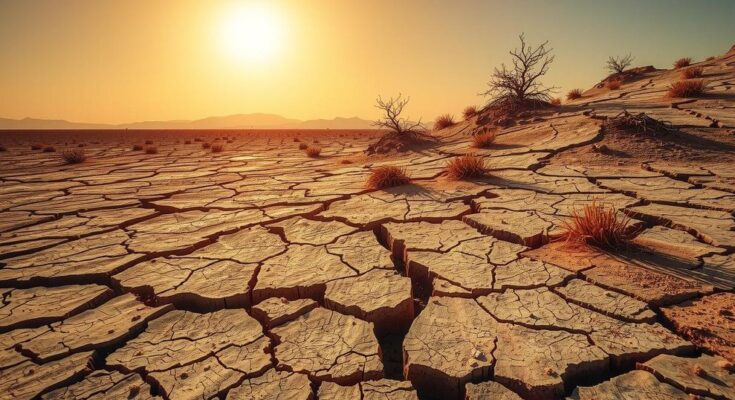Women and girls in South Sudan bear the brunt of climate change, exacerbated by recent extreme heatwaves. A study indicates that February’s heat was significantly intensified by global warming, leading to school closures and health risks, particularly for women. The findings emphasize the need for strategies to mitigate these impacts and address underlying gender inequalities.
In South Sudan, women and girls are disproportionately affected by climate change, especially during recent extreme heatwaves. A study published by the World Weather Attribution group ahead of International Women’s Day indicates that February’s extreme temperatures were exacerbated by human-caused climate change, becoming tenfold more likely and 2°C hotter due to global warming.
During February’s heatwave, significant incidents occurred in the capital Juba, with numerous students suffering heat strokes, resulting in the temporary closure of schools. This disruption marks the second occurrence of school shutdowns during heatwaves within a year, as extreme temperatures soared up to 45°C.
Typically, the hottest weather in South Sudan does not occur as early as February, indicating a shift in climate patterns. Many school buildings, constructed with iron roofs and lacking air conditioning, create oppressive environments for students, compounding the difficulties faced by educational institutions amid ongoing high temperatures expected to last into March.
Women and girls face distinct challenges as school closures hinder educational continuity, especially for girls who struggle to return to schools thereafter. Furthermore, women often undertake household roles that expose them to hazardous temperatures, increasing their likelihood of heat-related health issues.
To mitigate high temperatures in classrooms, experts suggest strategies such as enhancing ventilation, planting trees, and using lighter paint colors in school facilities. Additionally, adjusting the academic calendar and schedules may alleviate substantial disruptions in education.
Dr. Friederike Otto, a senior lecturer at Imperial College London, highlights that entrenched gender roles and economic challenges mean that women in South Sudan experience harsher impacts from climate extremes, reinforcing existing inequalities. She stresses the urgency of addressing these disparities and reducing carbon emissions from fossil fuel use.
The study reveals that this year’s maximum seven-day temperature in South Sudan would have been “extremely unlikely” without human-induced climate change, indicating that a similar heat event would have been 4°C cooler without this global warming. Such heatwaves also increase risks of pregnancy complications in a country already grappling with high maternal mortality rates.
Emmanuel Raju from the University of Copenhagen emphasizes that social inequities exacerbate the climate crisis for women and girls, resulting in increased burdens related to caregiving and reduced economic opportunities. Scientists warn that the frequency of extreme heat events in South Sudan is likely to escalate as global temperatures rise, resulting in further challenges, especially for women.
With current global warming reaching approximately 1.3°C, researchers find that dangerous heatwaves over 40°C are now not uncommon, with future projections indicating these could occur annually if fossil fuel usage continues unabated. Sarah Kew from the Royal Netherlands Meteorological Institute warns that if significant changes are not made, conditions will only worsen for vulnerable populations, particularly women.
The impacts of recent climate-fueled heatwaves in South Sudan illustrate a critical intersection of gender and environmental challenges. Women and girls face heightened risks to their health and education in a country where traditional roles and limited resources deepen existing inequalities. Immediate action to address climate change and promote gender equity is essential to mitigate future disparities and protect vulnerable populations.
Original Source: www.climatechangenews.com




